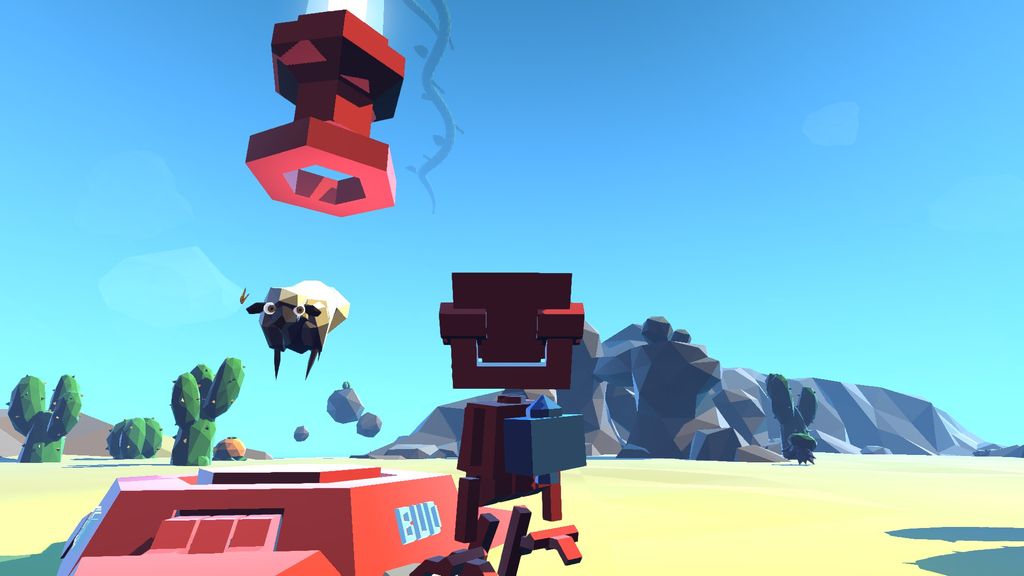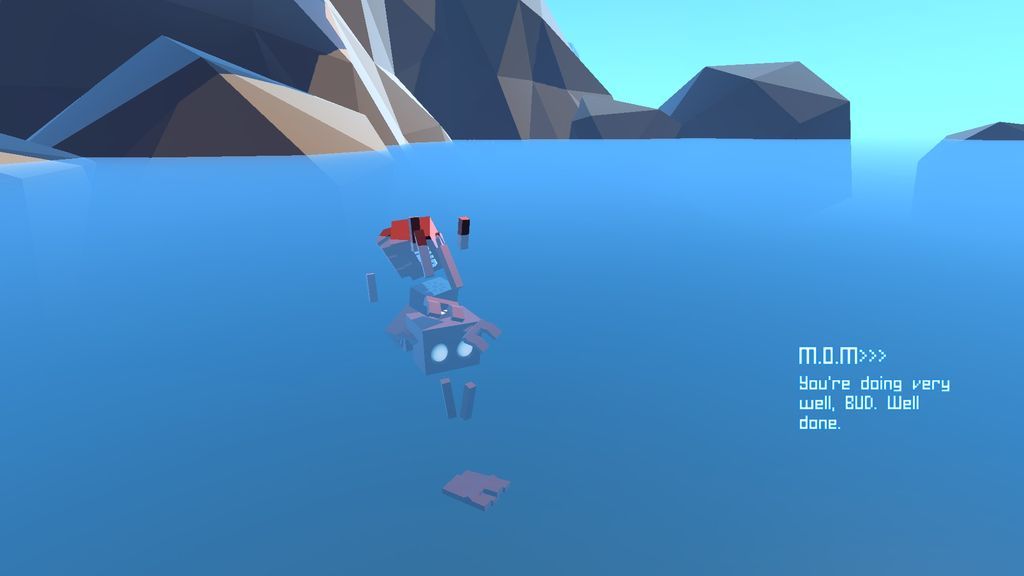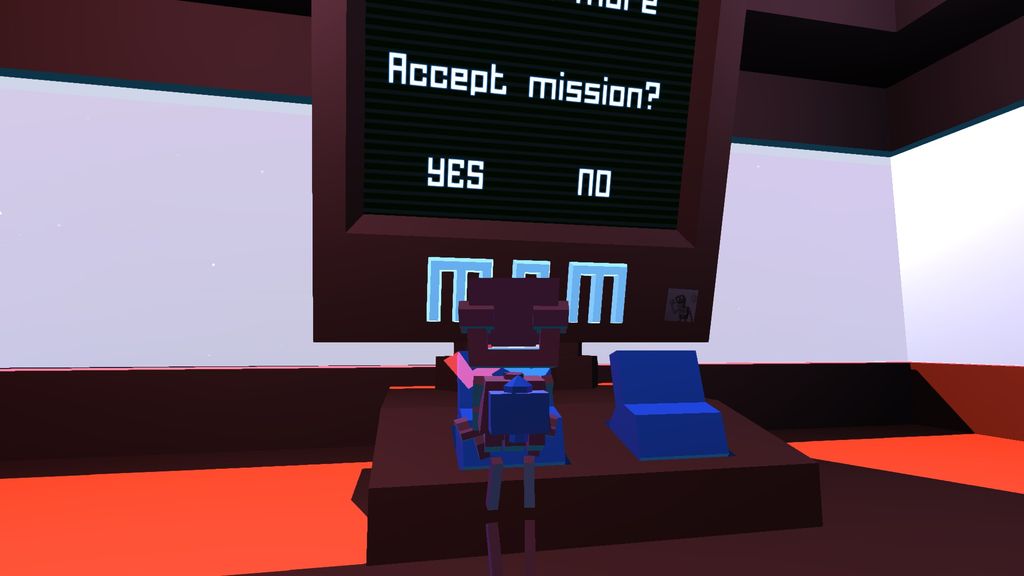Interview with Pete Young
Grow Home is a small game made all the more appealing for being developed by a studio used to highly supervised AAA titles. We wanted to know more about the origin of this recreational and inspired development. Meet Pete Young, the game producer.

"We have a strong technical heritage."
Let's start with a short presentation from you please. What games have you worked on before and in what capacity? And of course, what was your role in the development of Grow Home?
Finally, amid these AAA titles, Grow Home is kind of breather for you, right? How did you manage to make time to develop a project which, if our informations are correct, was not intended for commercial release?
P.Y. : I've now been at Reflections for over 15 years, starting out as a programmer on Stuntman for the PS2. On Driver: San Francisco I had a more creative role, taking responsibility for the whole of the multiplayer experience. Since then I've moved into production, spending some time on The Crew before changing again to create the team that gave you Grow Home. My role is Producer, and I'm responsible for the strategy and business side of things, however, with a small team like this we each get to be involved in the project in all kinds of ways, it's not limited to what our job titles say.
Finally, amid these AAA titles, Grow Home is kind of breather for you, right? How did you manage to make time to develop a project which, if our informations are correct, was not intended for commercial release?
P.Y. : The idea for the team came from wanting to challenge how we make games at Reflections. We have a thirty year track record of developing massive AAA games and a strong technical heritage, but we're also a lot more than that. We created the opportunity to experiment on a smaller scale, with some very challenging constraints and the mindset of creating actual product, not just blue-sky research and development.
With this in mind, we started out with the intention of creating a game we could release, we just weren't sure what that game would be. We had previously been experimenting and playing with procedural animation. There was something about one of those early demos, one of the toys we created had a charm and personality, a real character coming from its movement that many people connected with. We developed this character into BUD, the robot in Grow Home. Players love that the little robot can climb and they are able to control his hands individually. It's a really fun, interesting and different experience.
"We’ve been amazed with the creativity shown by our players."

In Grow Home, the player is basically master of the level design. He shapes the environment in which BUD will then be able to evolve. Could this creative aspect lead to mods where the community could offer its own levels?
Grow Home addresses an ecology-tinted subject. Is this a theme dear to your heart or a simple trope to make the hero more engaging?
P.Y. : We've already been amazed with the creativity shown by our players and have been keeping a close eye on the live streams, videos and screenshots they are sharing. It's been fascinating to see the different experiences players are having, especially the stories they are creating from their interactions with the world.
You could certainly imagine community-based mods as a strong compliment to the experience, however, it's not currently in our plans for Grow Home. Right now, we're interested in bringing you more unique, fun and interesting game experiences.
Grow Home addresses an ecology-tinted subject. Is this a theme dear to your heart or a simple trope to make the hero more engaging?
P.Y. : I think we could all benefit from paying more attention to the impact we each have on our environment and its great you have picked up on this, however, we didn't actually set out to make an ecological statement with Grow Home. Our focus was to create a unique and engaging gameplay experience and the story and context became a wrapper for this. BUD's mission to grow this giant Star Plant was a great fit to support the gameplay experience we intended as well as lending itself well to the relaxed, quirky and non-confrontational nature of the game.
"You never know where BUD might show up next."

At the end of the game, if BUD is back on land, we can find a carcass in his image floating on the beach. By gathering each piece, is it possible to assemble them and get a second robot?
Since you are accustomed to multiplayer, especially with The Crew recently, have you thought about a multiplayer aspect to Grow Home or do you find this completely inappropriate for the initial concept?
BUD is very engaging and his colorful universe matches fairly well with what we can find in today's cartoons. Do you envision making a cartoon adaptation of him, in the same vein as what's been done for Raving Rabbids for example?
P.Y. : That would be awesome! What a great idea, I wish we had thought of that. The carcass you found will have been from one of your previous accidents. There's unfortunately no secret tricks to collecting together your broken body, but the teleporters make handy trophy cabinets for any bits you do collect. The eyeballs are especially creepy.
Since you are accustomed to multiplayer, especially with The Crew recently, have you thought about a multiplayer aspect to Grow Home or do you find this completely inappropriate for the initial concept?
P.Y. : At Reflections we are very accustomed to multiplayer development and understand how complicated and time consuming it is to develop multiplayer features. We considered adding multiplayer components throughout development, however, it's not something we could do well with the small team we have. We also agreed there was something strong with the relaxed and somewhat solitary feel of the game, so finding a way to contextually introduce other players would have been a tricky problem to solve.
BUD is very engaging and his colorful universe matches fairly well with what we can find in today's cartoons. Do you envision making a cartoon adaptation of him, in the same vein as what's been done for Raving Rabbids for example?
P.Y. : This is a great idea, however, we don't have any plans at the moment. BUD is such a loveable character, so you never know where he might show up next.
"We needed a style that was very fast to work with."

Jack Couvela is the artist who imagined and designed the character of the robot BUD. Do you know where he got his inspiration?
He also recently called on Twitter to encourage players to buy the PC version of the game, to help with its release on consoles. Just between us, the console release is already in the works, right?
Finally, and changing the subject, you've worked on the Driver series. Do you have good news to tell us about it? Or rather, is it reasonable to hope for a sequel or a reboot?
P.Y. : Grow Home is a very different game to any we've made before at Reflections. We feel that the character movement of BUD is very childlike, playful and naïve, so we needed an art direction to match. This led the team to investigate simple, geometric shapes and bright colours. Another consideration was our tiny team size and tight schedule, so we needed a style that was very fast to work with. In particular, Jack was inspired by origami designs, paper cut-out and collage styles and especially the recent wave of 'low poly' digital illustrators whose work was a real inspiration.
We wanted to make a clear distinction between our mechanical character, BUD, and the organic alien world of plants and animals that he explores. We did that by making BUD out of square shapes, while the plants are all triangles. We knew that this geometric landscape of flat surfaces had to feel solid, and for that we would need some sophisticated lighting. Inspired by Pixar films like Wall-E, this mostly comes from bounced light along the edges, giving everything a real sense of its shape, even out of the sun or moonlight.
He also recently called on Twitter to encourage players to buy the PC version of the game, to help with its release on consoles. Just between us, the console release is already in the works, right?
P.Y. : It's too early to say right now, although we always had other platforms in mind. We feel the experience of playing Grow Home using a controller really accentuates the grabbing and climbing.
Finally, and changing the subject, you've worked on the Driver series. Do you have good news to tell us about it? Or rather, is it reasonable to hope for a sequel or a reboot?
P.Y. : We pushed gameplay innovation with Driver: San Francisco and we're keen to carry on that trend through games like Grow Home, exploring new, fun and innovative gameplay experiences and challenging development conventions.
